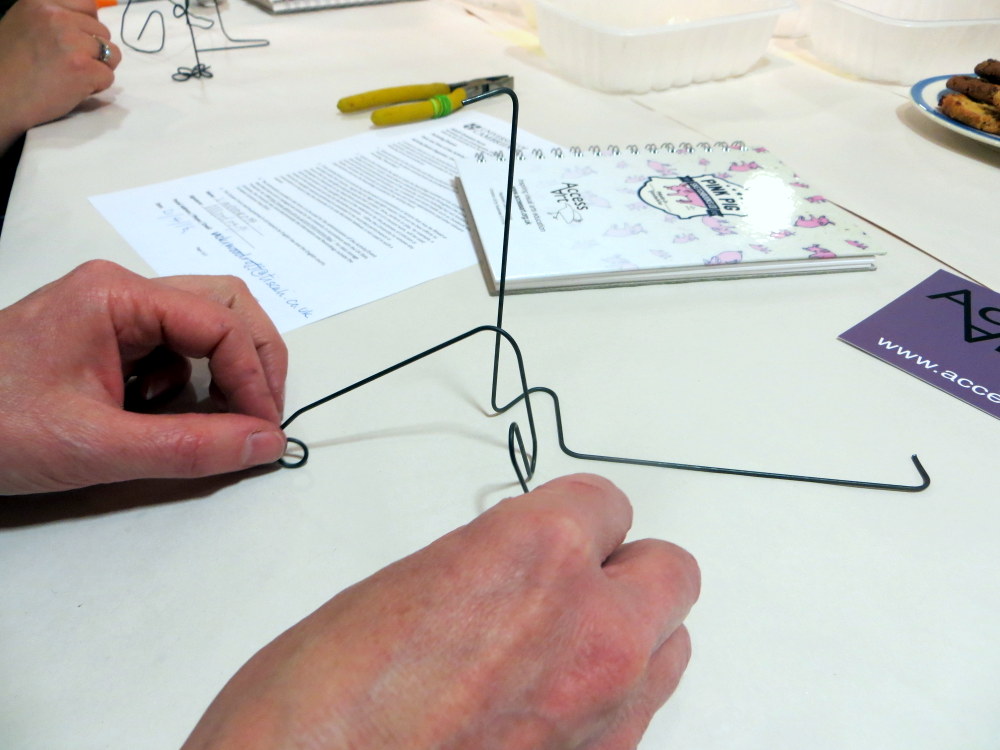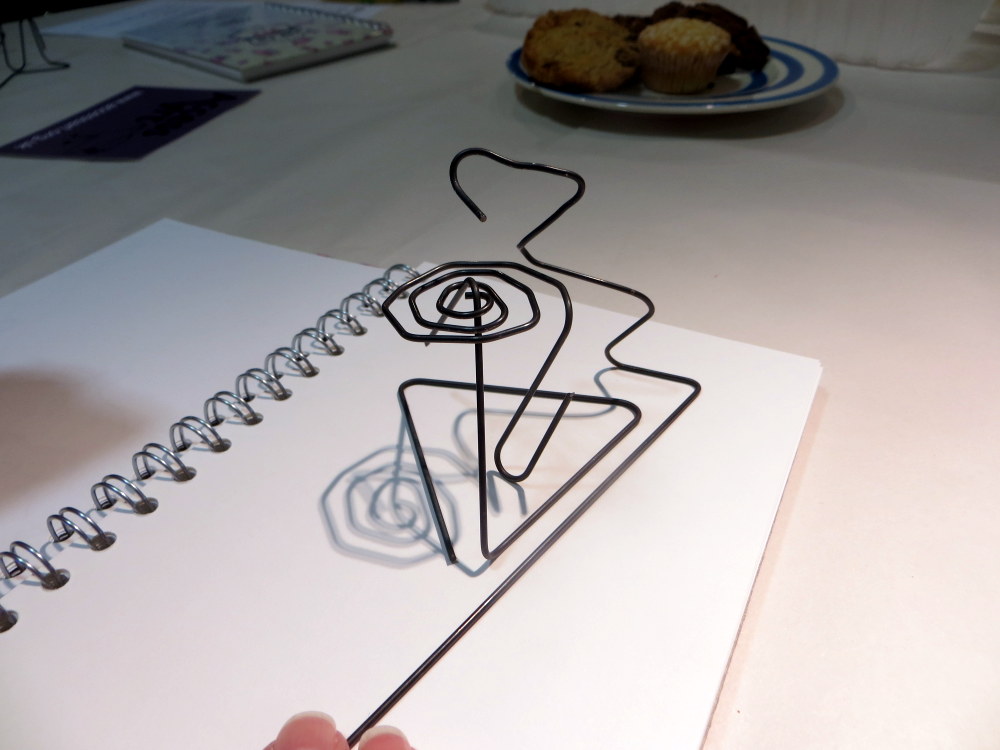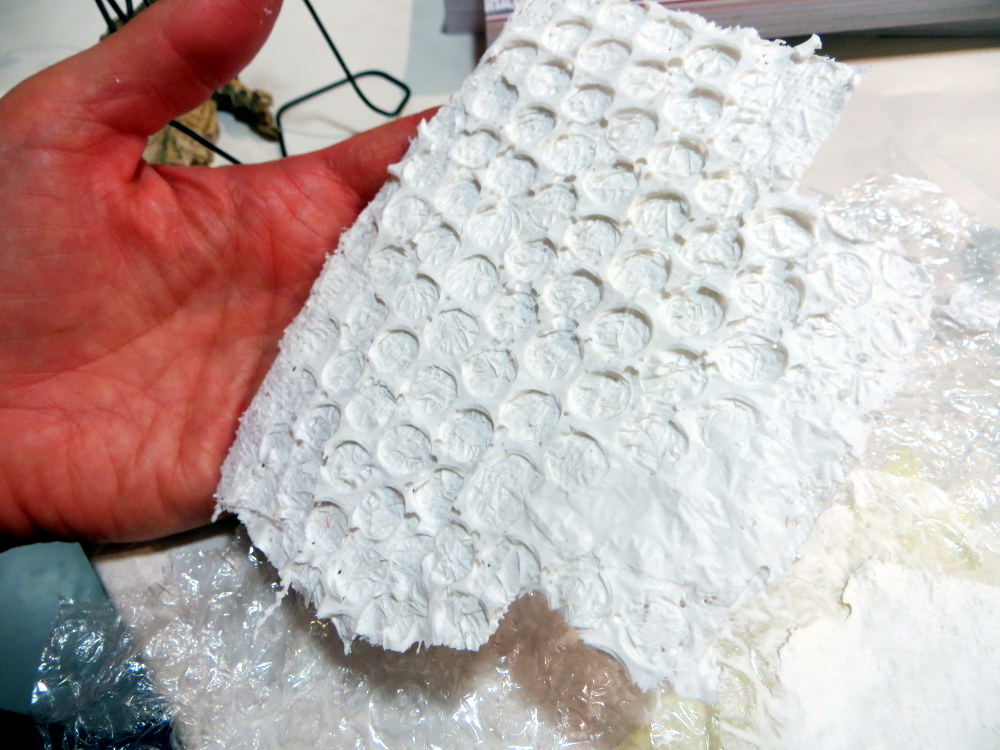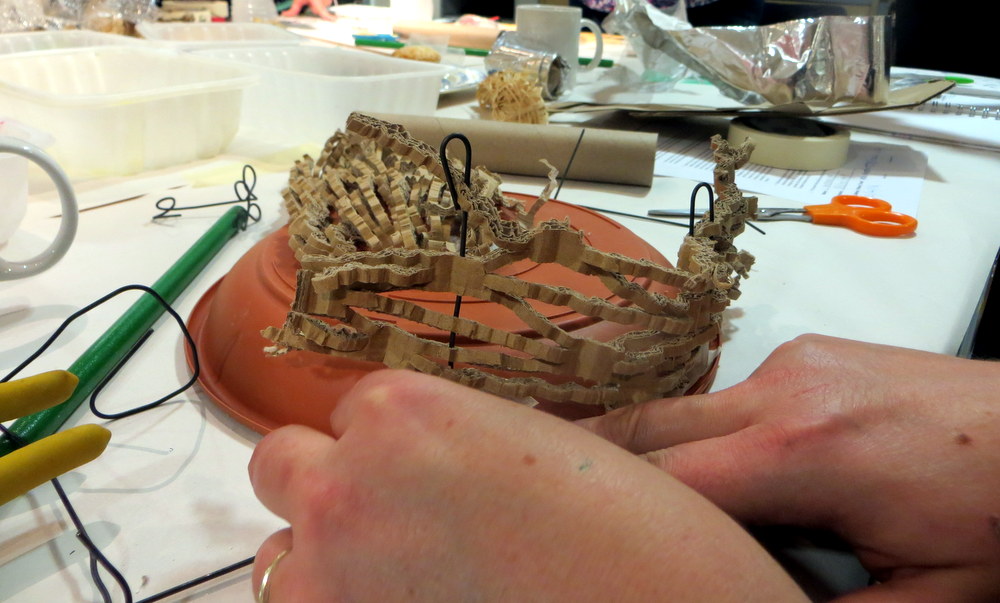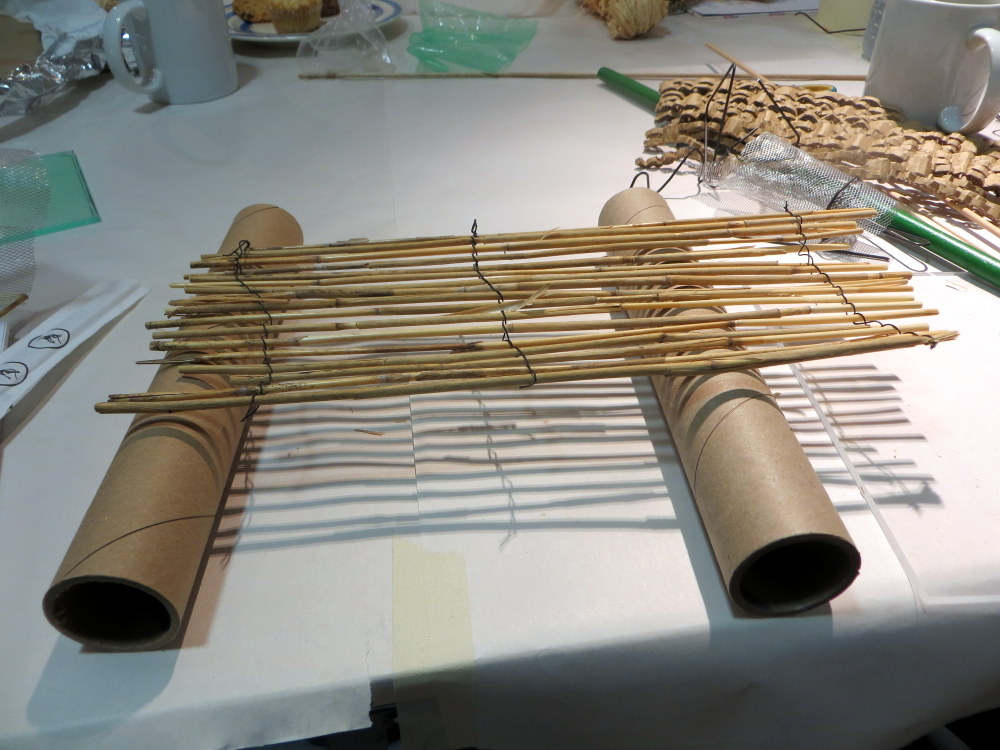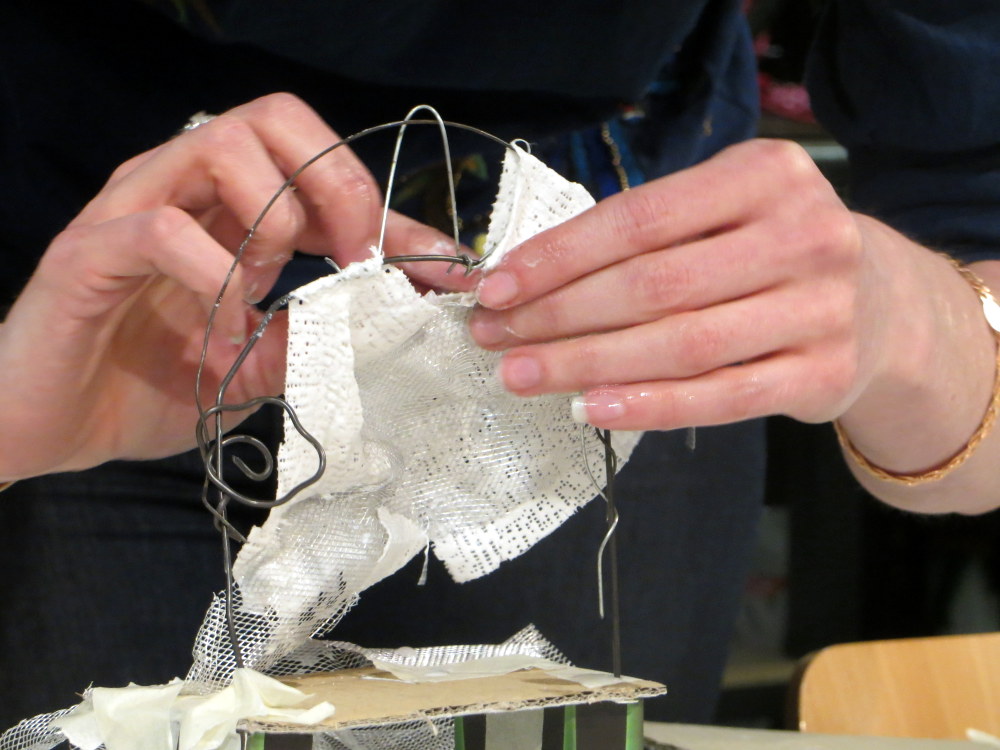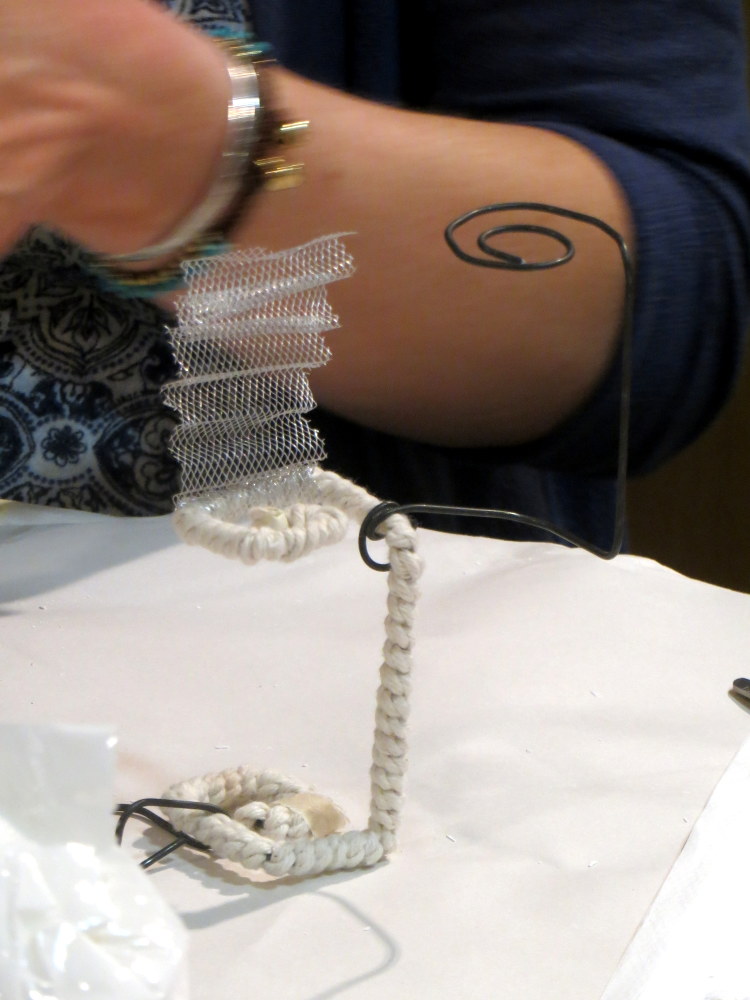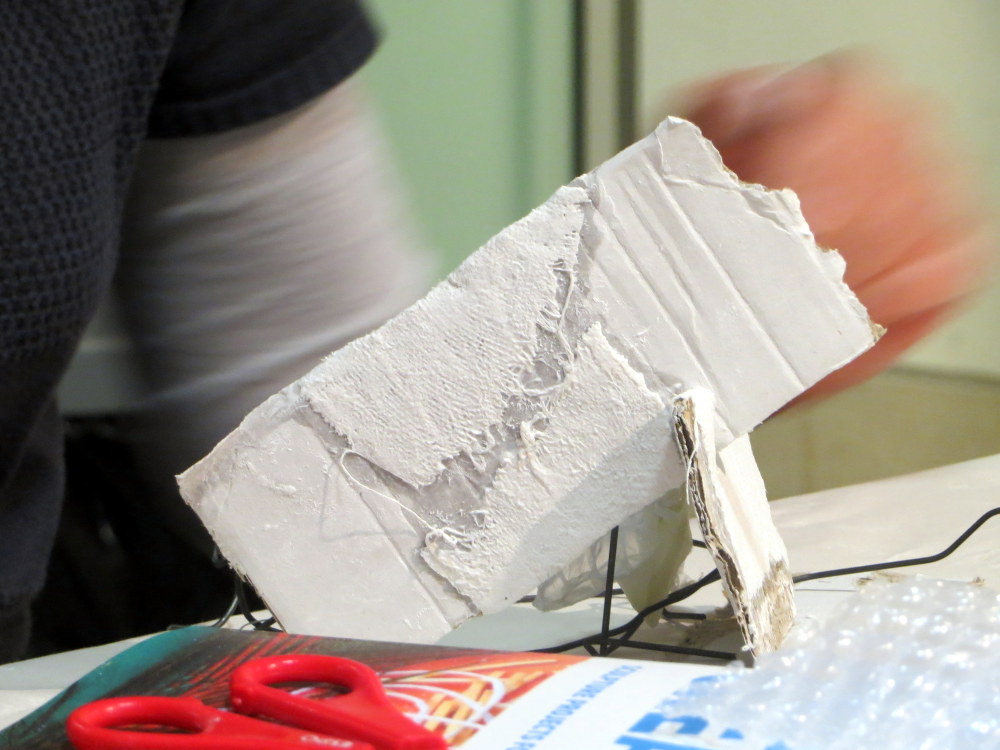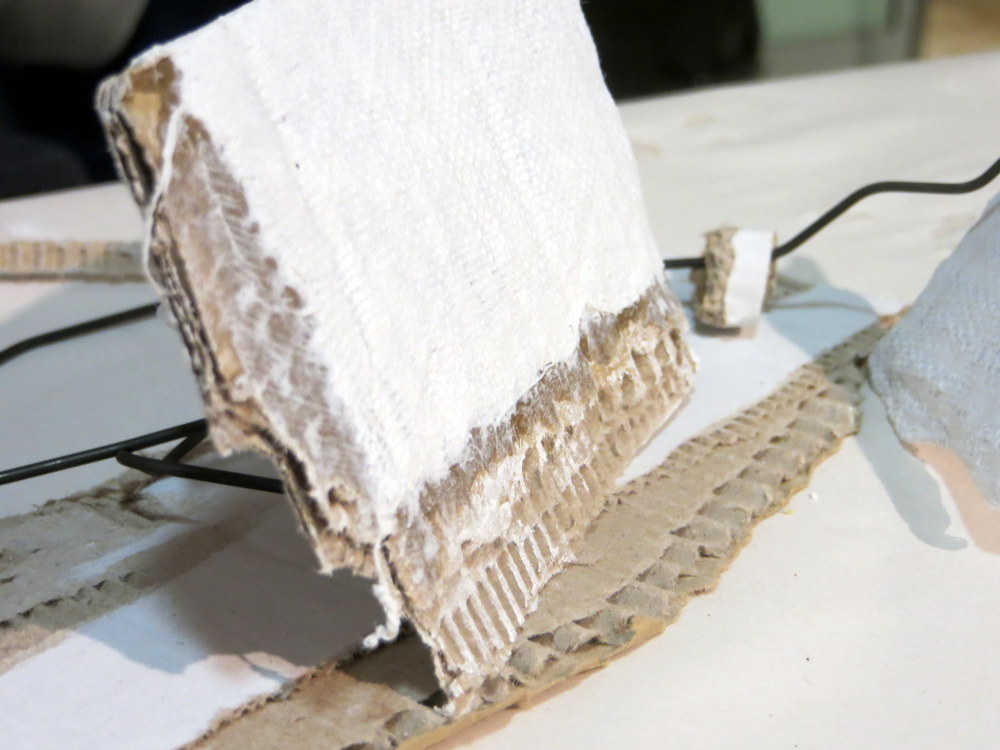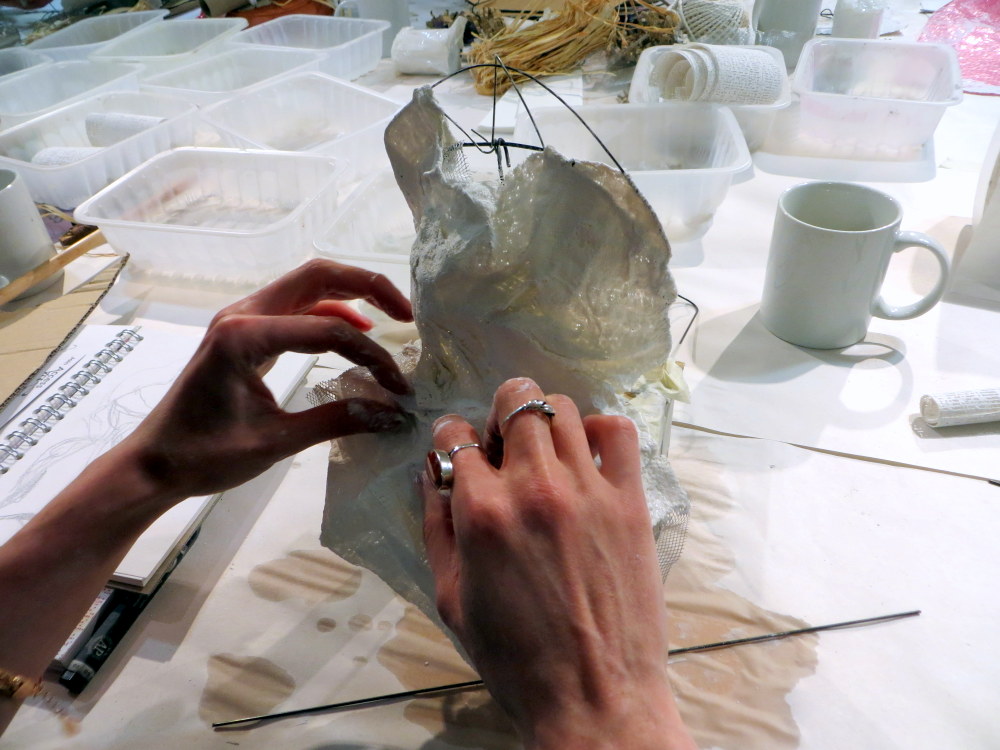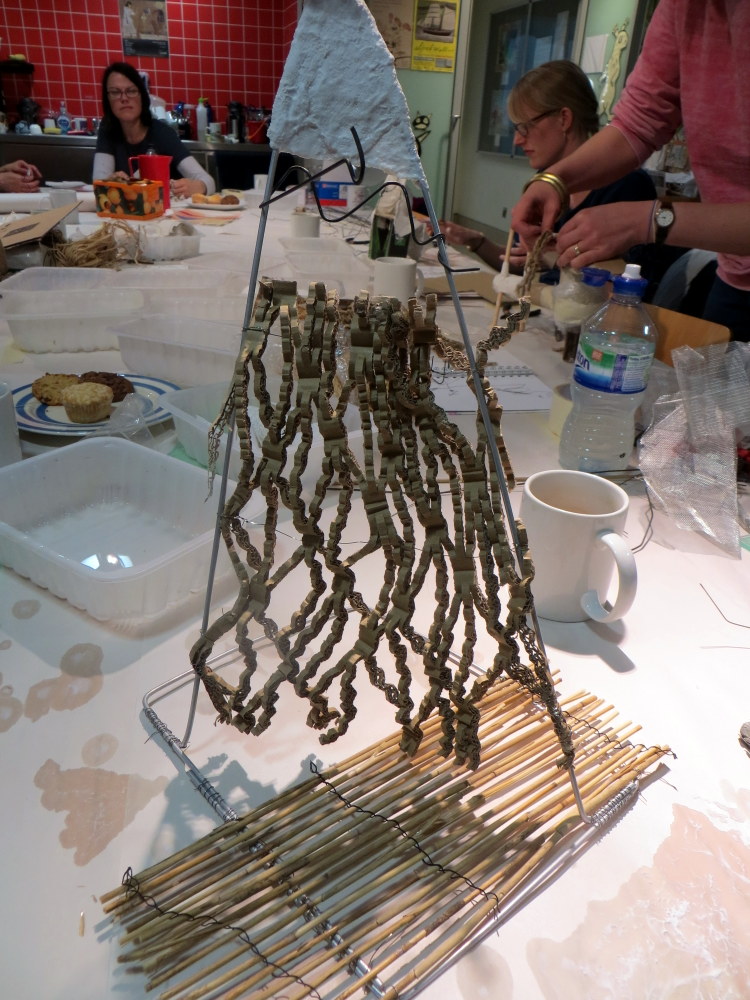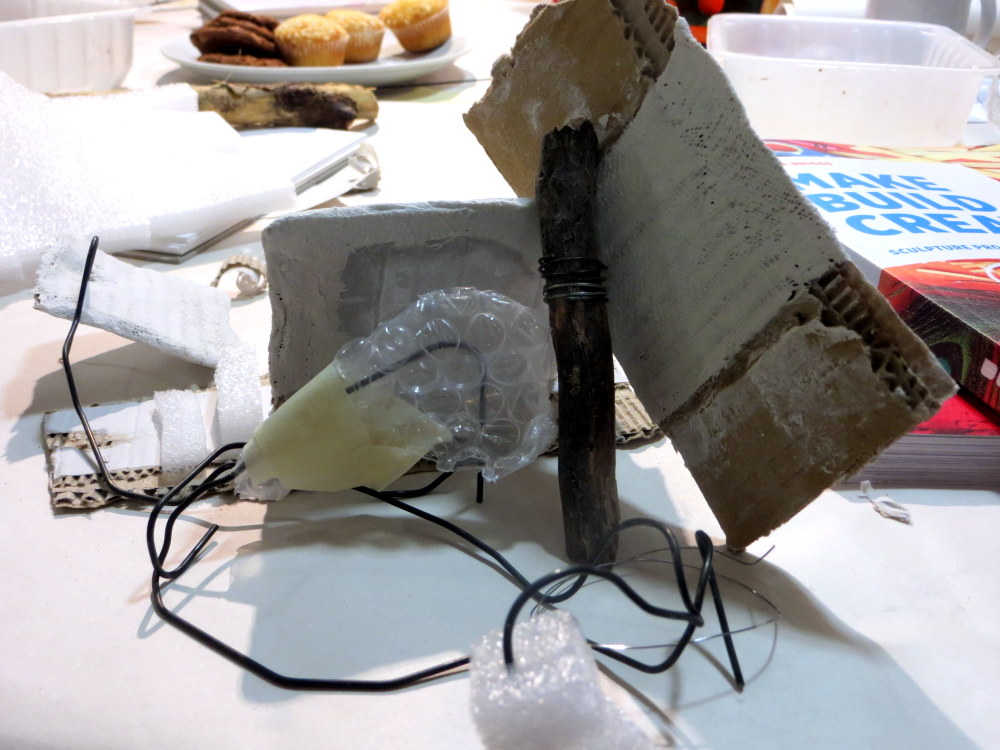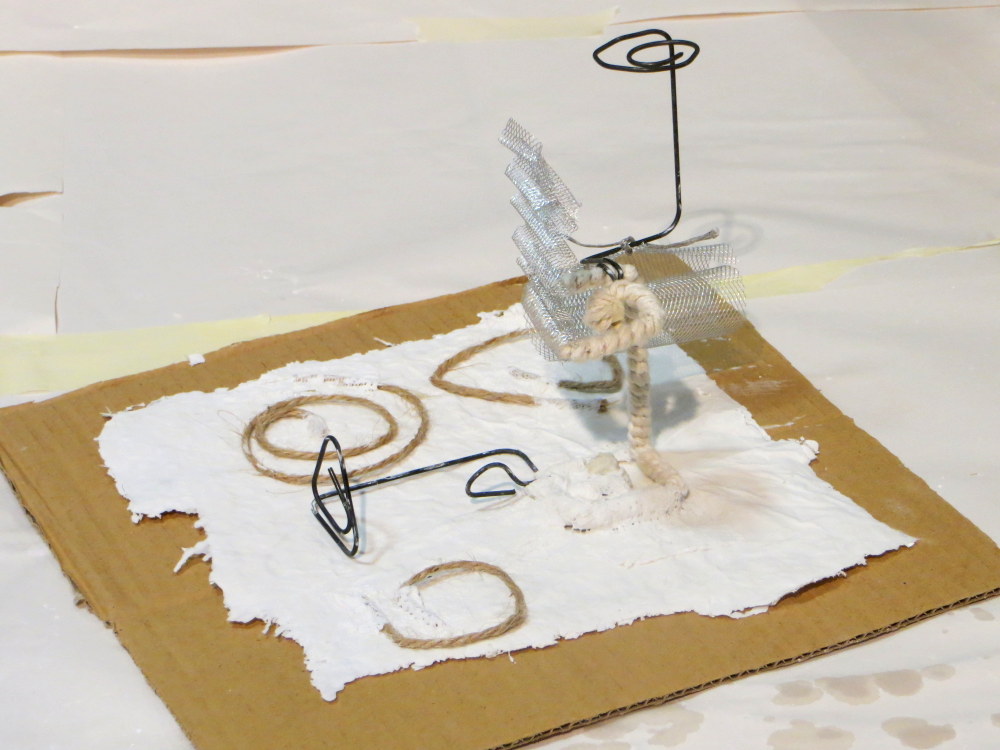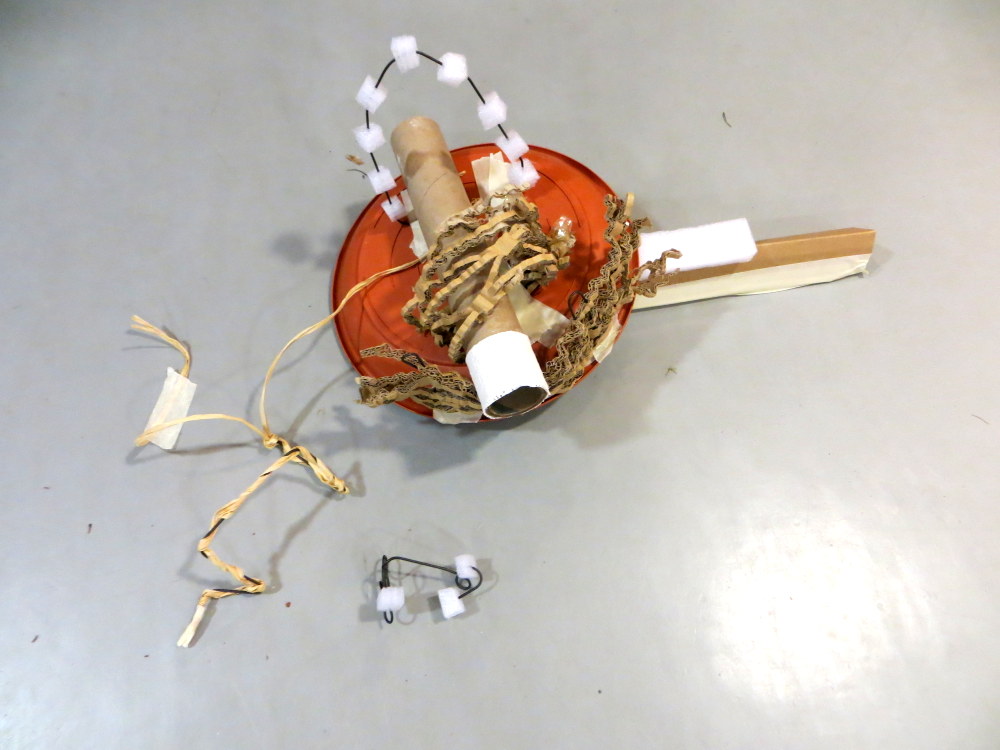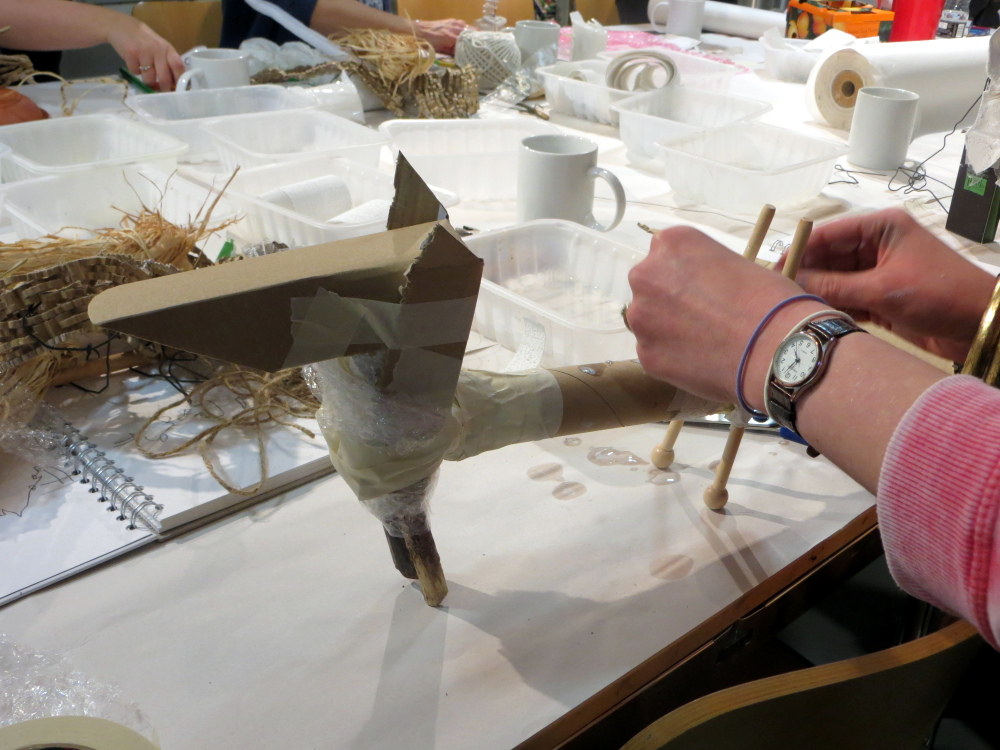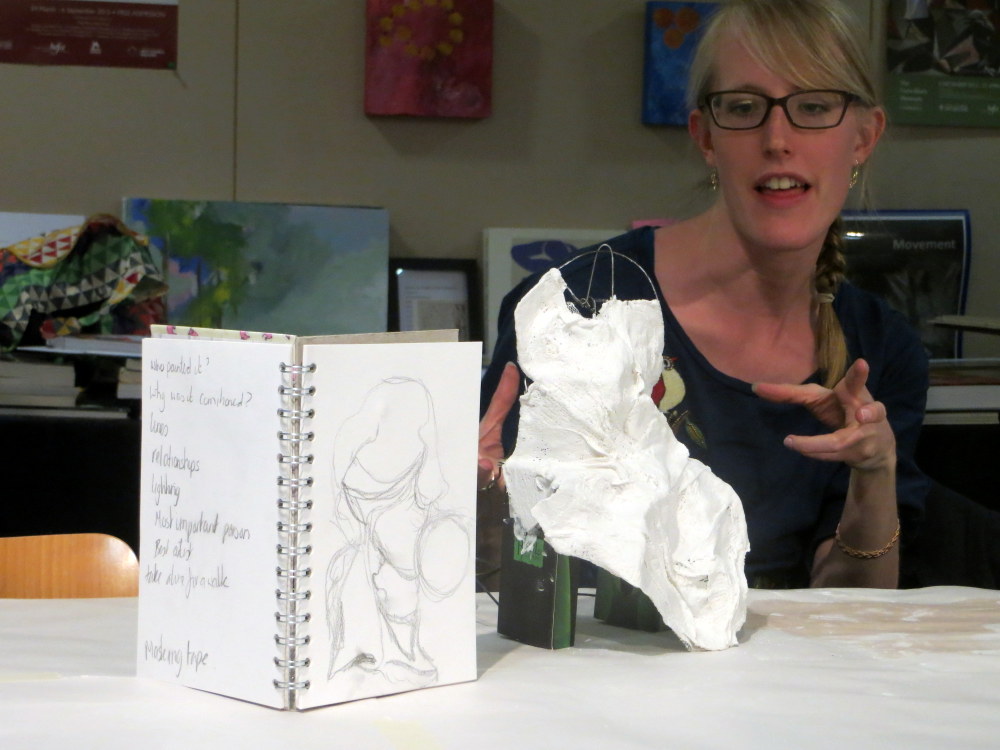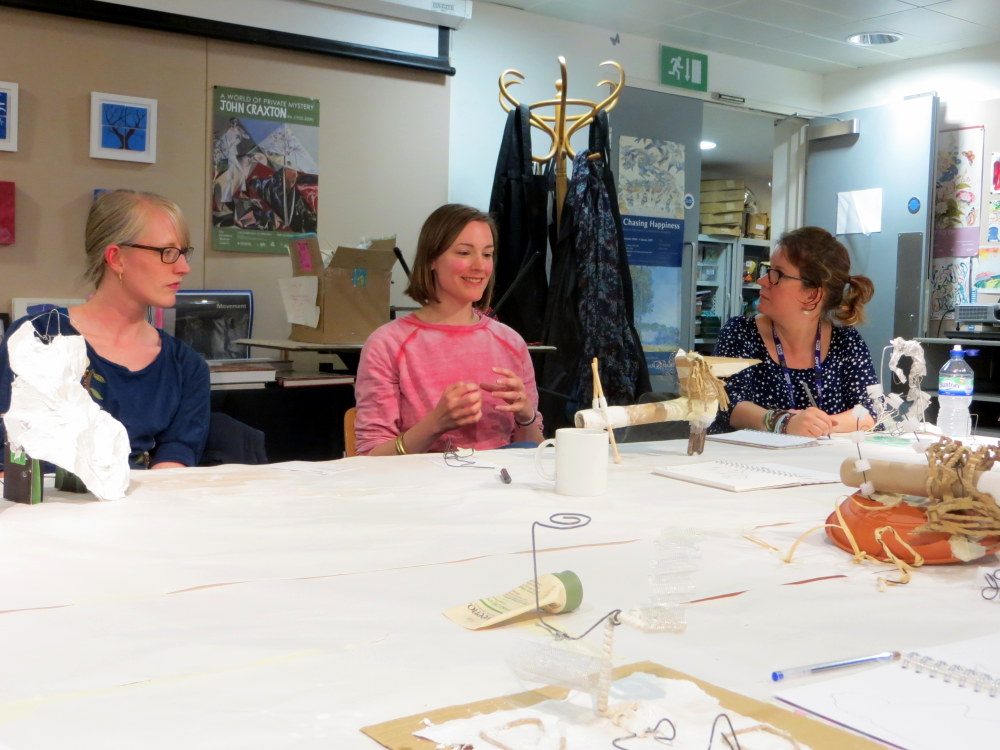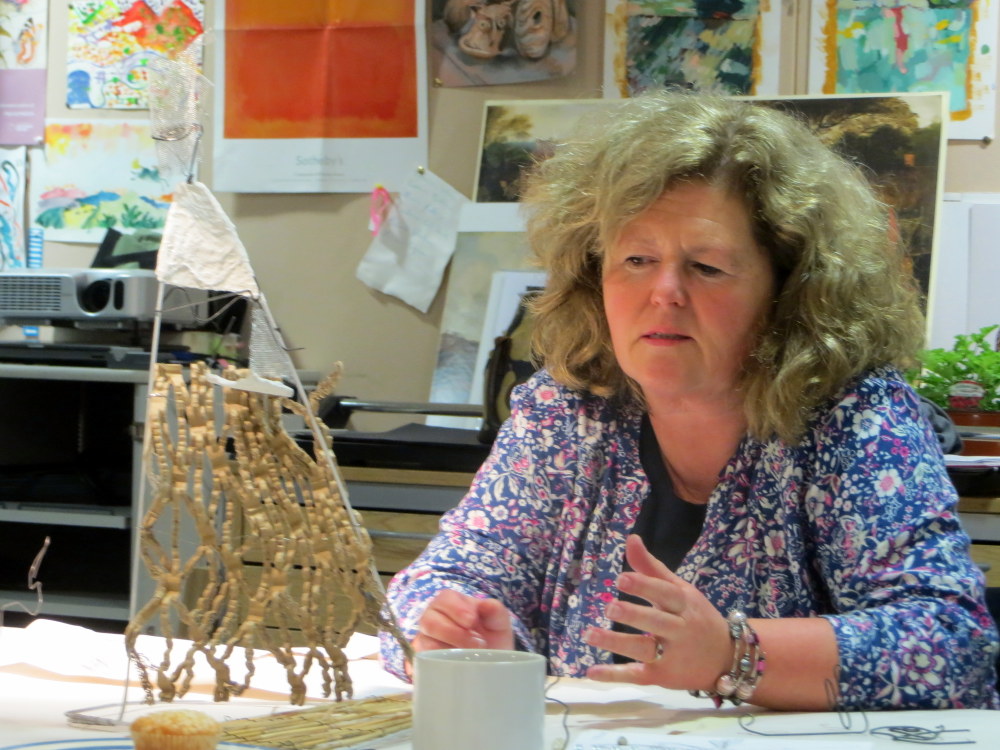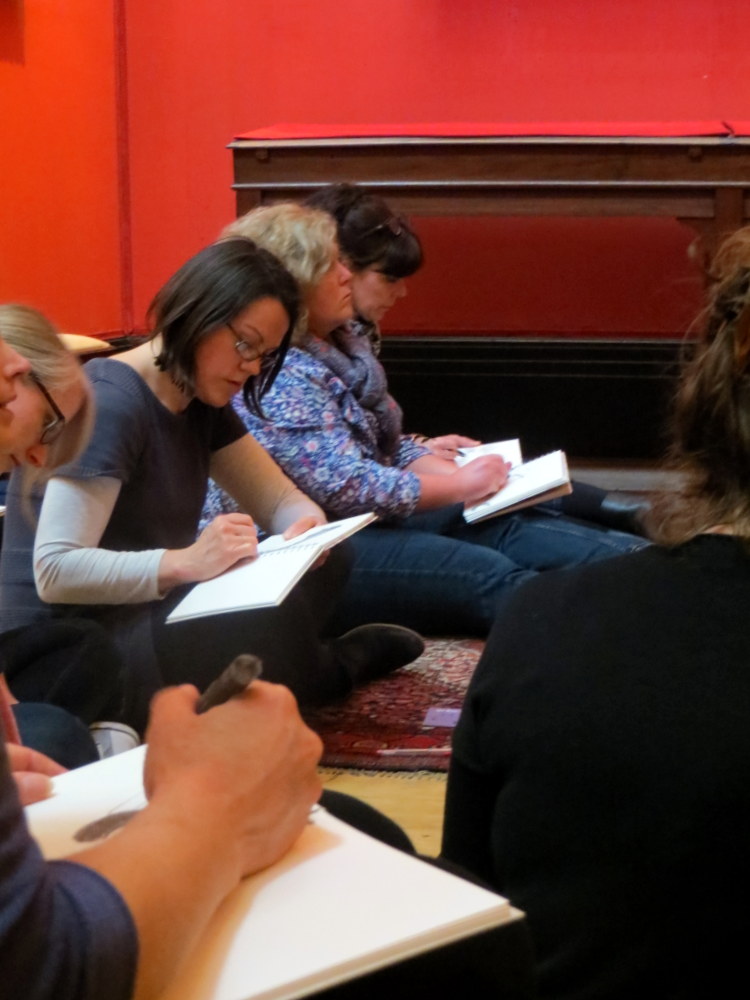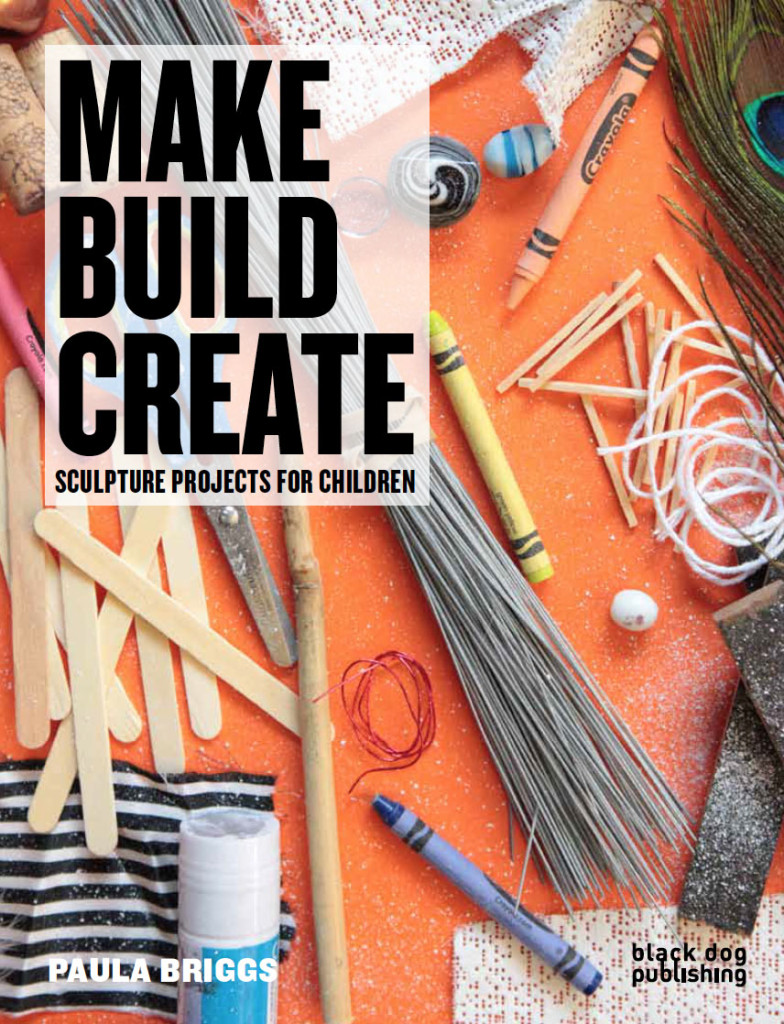Making Sculptural Interpretations of 18th Century Portraits at the Fitzwilliam Museum, Cambridge
This post shares how Paula Briggs and Sheila Ceccarelli from AccessArt and Kate Noble from the Fitzwilliam Museum, Cambridge, enabled teachers to explore making three dimensional interpretations of two dimensional 18th Century portraits.
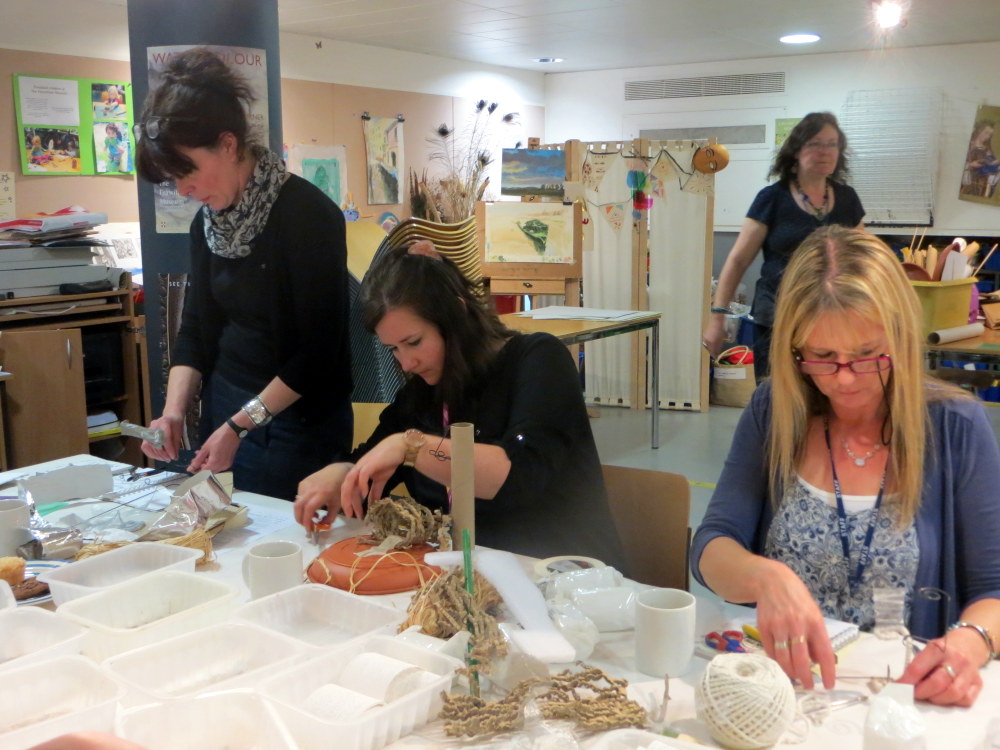
This session followed on from Using Drawing to Get Closer to 18th Century Portraits at the Fitzwilliam Museum, Cambridge.
After having explored the paintings up in the gallery, teachers were presented with a variety of materials and introduced to sculptural processes and ideas on how to make the leap from working in two dimensions to three. Having worked in string on the gallery floor, teachers had already explored interpreting the paintings with a more physical and material approach.
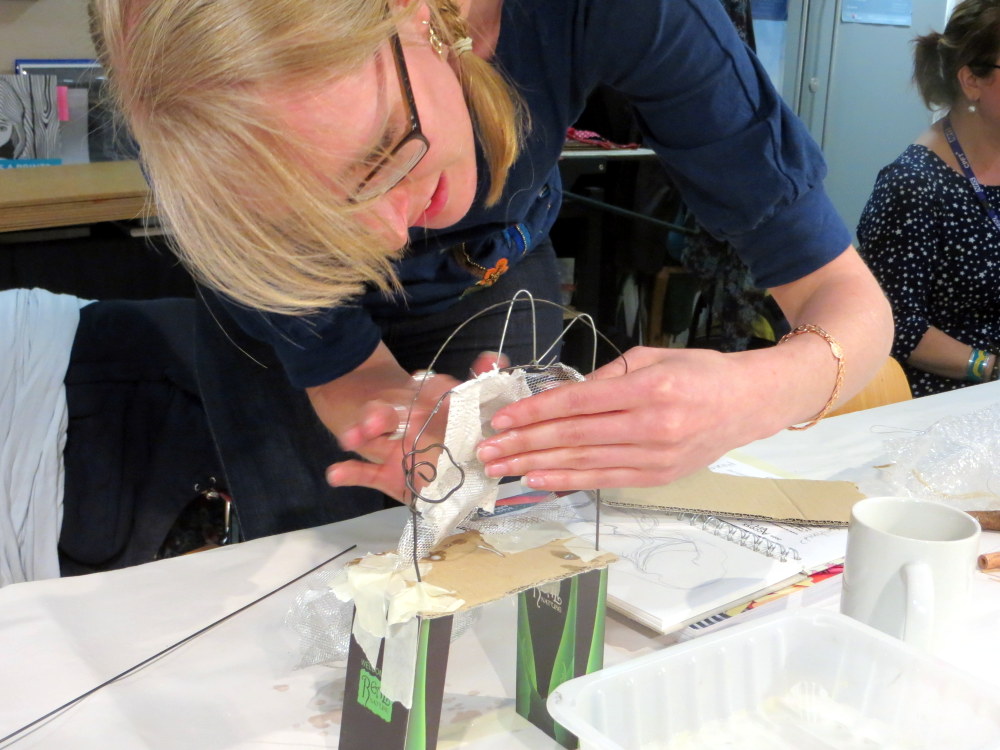
Materials
AccessArt are firm believers that the way into making is through material exploration and having plenty of different materials at hand to make discoveries and choices about the ‘right’ materials for the job. Using and exploring materials is the only way to really get to grips with them and understand their properties.
We would argue that more variety in materials available the more opportunity for children to develop skills in manual dexterity.
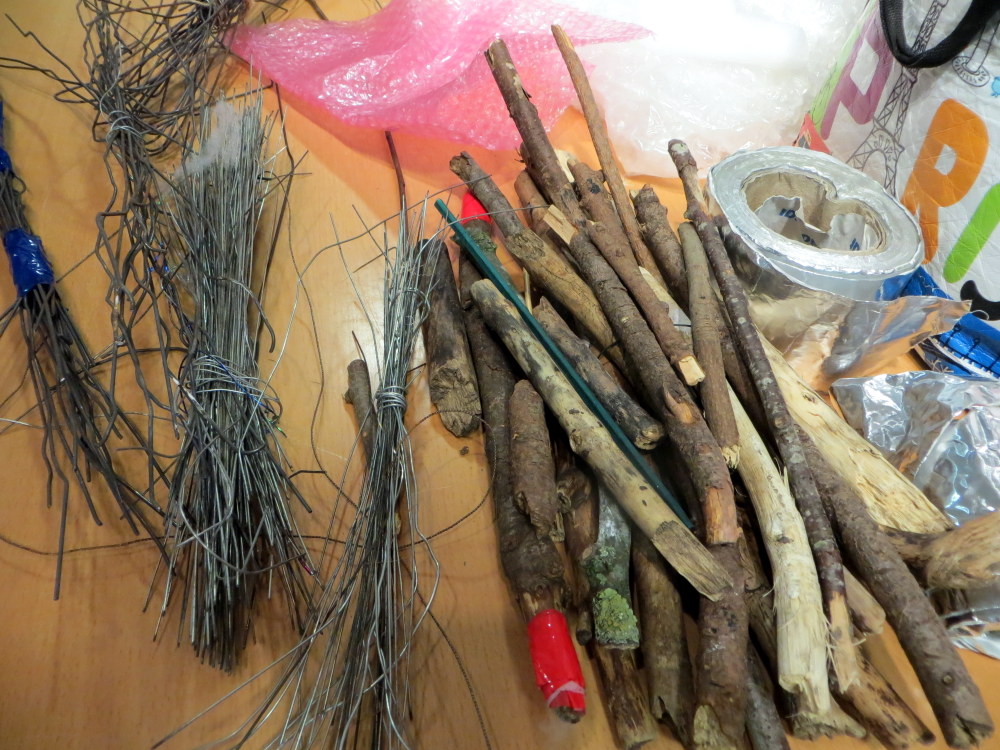
We also believe in a playful approach, whereby materials lead the way through experimentation and challenges. It’s not always easy to make something stand up!
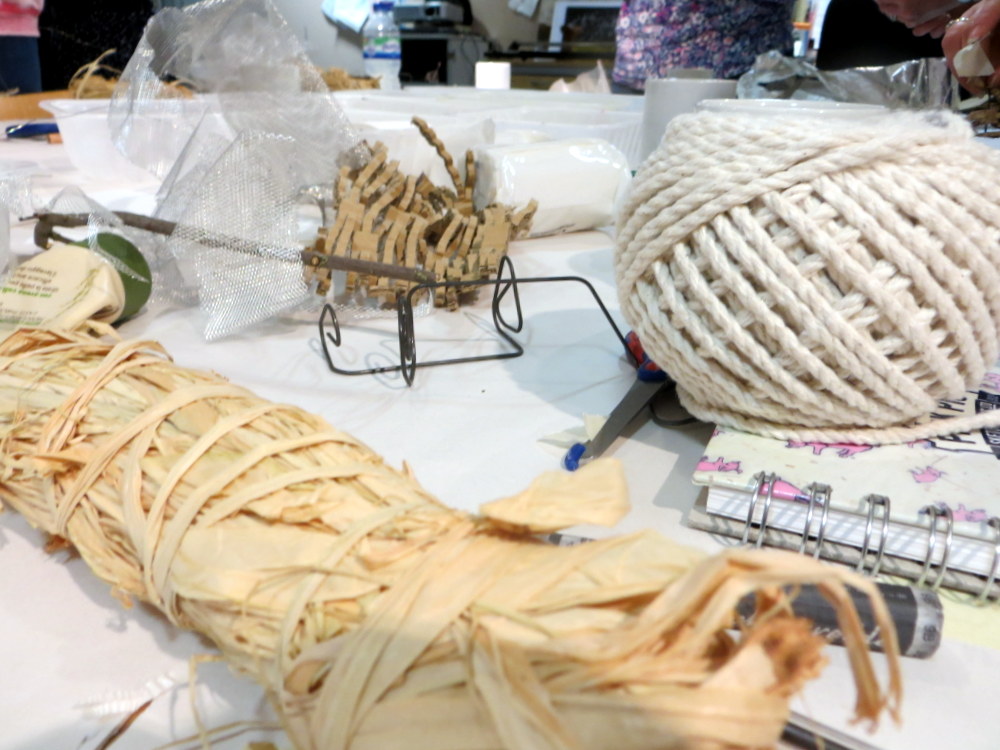
There is a misconception that making sculpture is expensive and a potential drain on school resources. Looking for cheap and free materials in scrap stores or just using general junk and what’s available from nature, is a totally legitimate approach to making.
Core materials like Modroc can be bought through regional suppliers like ESPO (Eastern Region Procurement) cheaply and others can easily found in Pound Land or re-cycle centers.
Exercise One – Playing with Three Pieces of Wire
This challenge was to start getting teachers thinking in three dimensions and about basic sculptural principles like the relationship between shapes in a sculpture and how an object might stand on its surface.
Teachers were given three short pieces of modelling wire and asked to bend each piece in a different way. They were then asked to play with the three pieces and see how they might relate to each other as a group. Teachers were encouraged to keep trying different combinations, juxtapositions and positions to explore how shapes and forms might change and interact with each other.
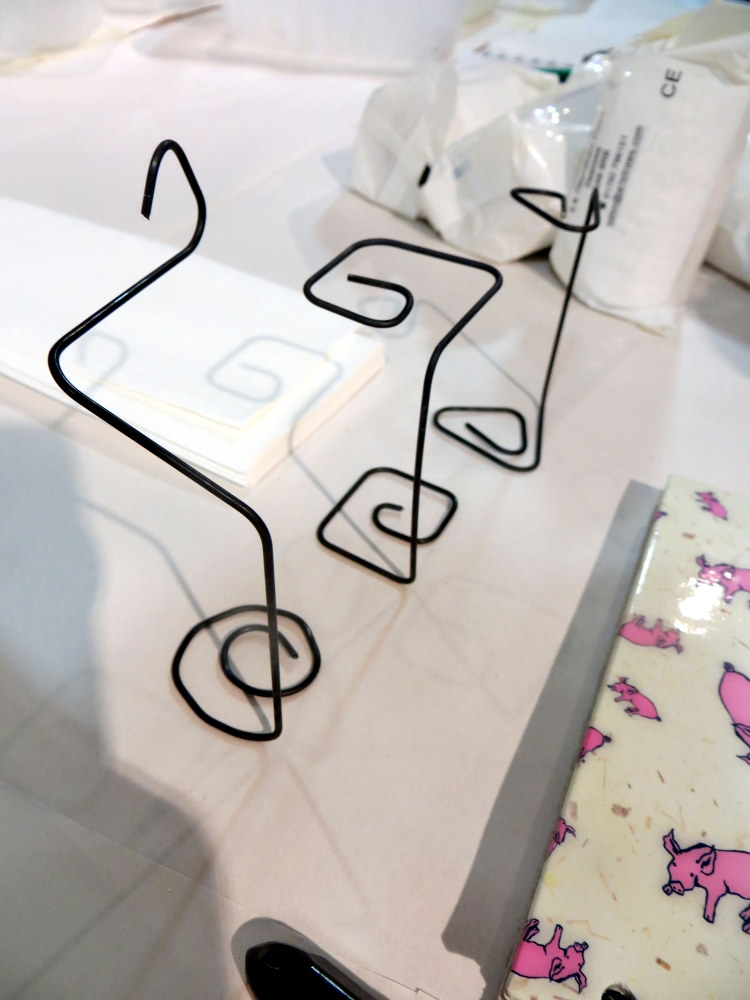
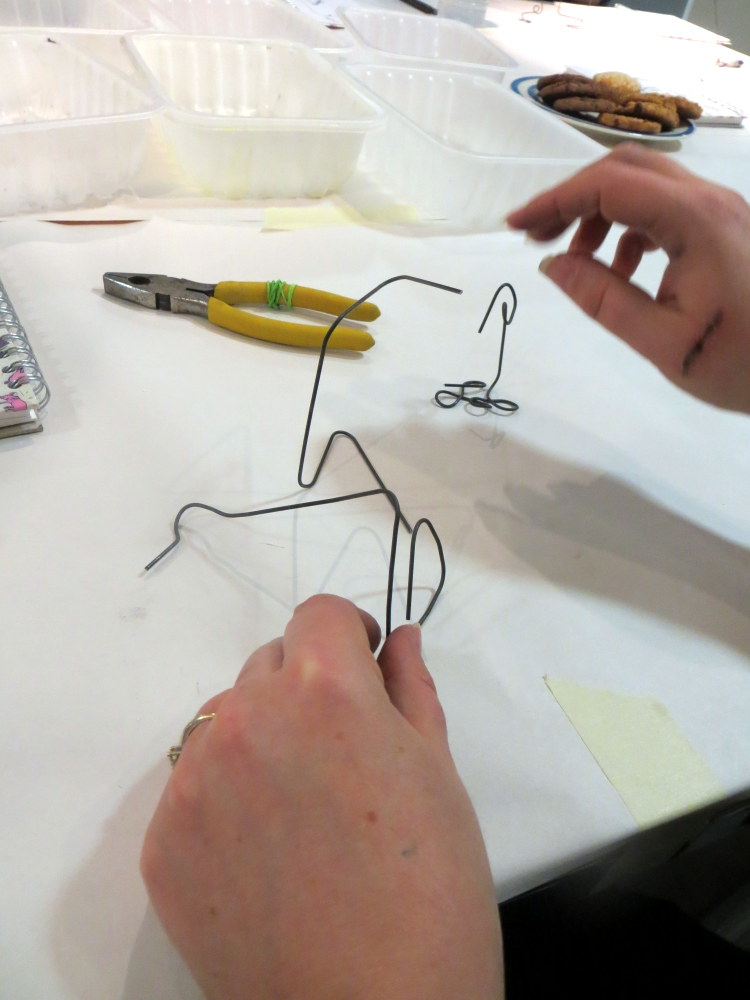
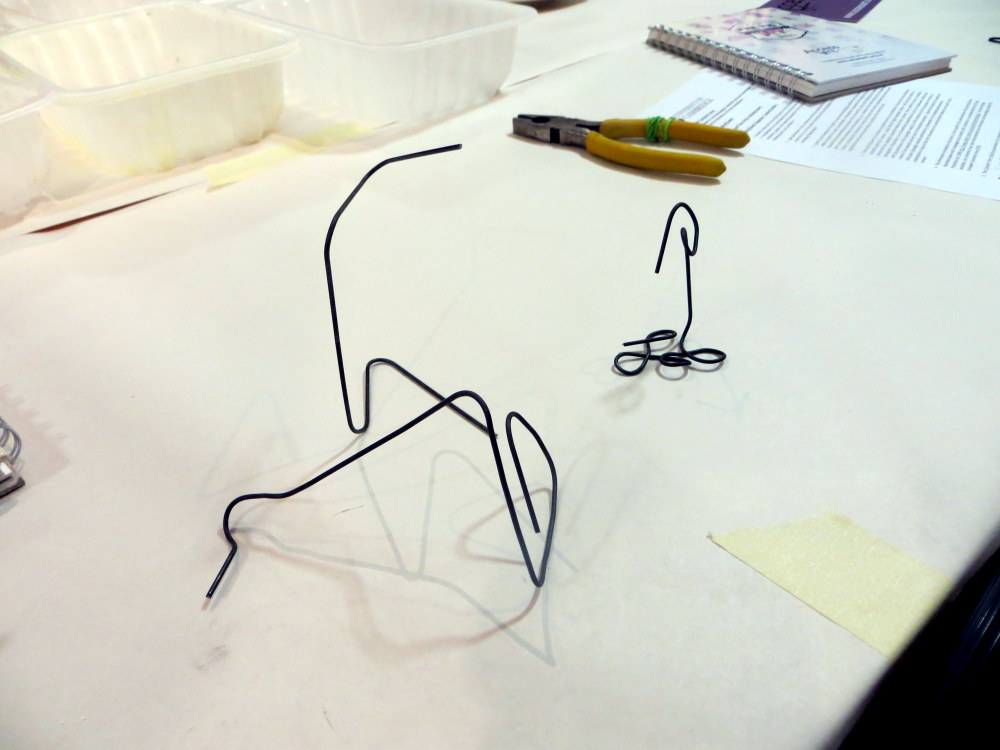
Sculpture Challenge!
Teachers were then set loose on all of the materials and encouraged to play and explore and build a sculpture inspired by the drawings they had previously collected up on the gallery.
Teachers valued the open ended approach and the wealth of materials on offer to experiment with.
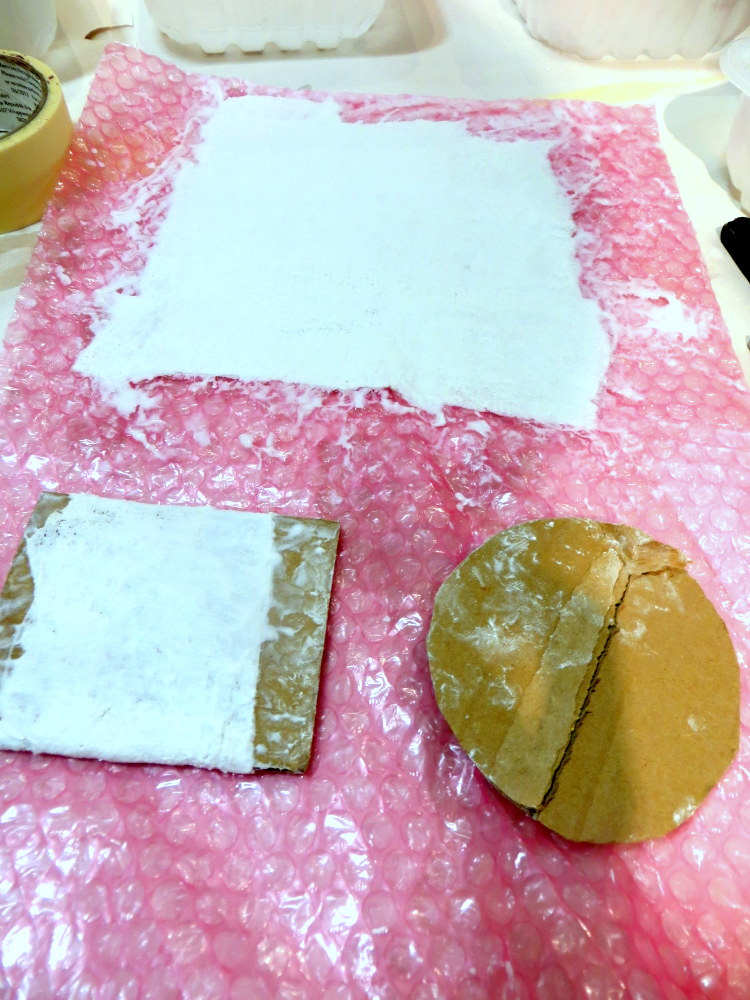
In the photos below you will see how teachers combine and play with materials and start to bring them to life in sculptural forms.
Having first hand experience of the power of manipulating materials and experimenting with combinations and techniques they recognised the vast potential of learning opportunities for their pupils.
They also experienced first hand just the time it takes to work things out and understand the properties of a material. We discussed strategies for integrating making into a busy school time table – and suggestions were made like working in small groups on a rotational basis on tables in the ‘wet area’ with extra help if possible.
Many thanks to the teachers who participated in this InSET training session for sharing their process with AccessArt and the Fitzwilliam Museum, Cambridge.
Many thanks to Pink Pig Sketchbooks for their generous donation of sketchbooks to AccessArt.
Thank you to Kate Noble for facilitating the session and to Ali for her support.
Photographs by Paula Briggs.
UK Charity AccessArt created this resource in collaboration with the Fitzwilliam Museum, Cambridge.
AccessArt has over 850 resources to help develop and inspire your creative thinking, practice and teaching.
AccessArt welcomes artists, educators, teachers and parents both in the UK and overseas.
We believe everyone has the right to be creative and by working together and sharing ideas we can enable everyone to reach their creative potential.

